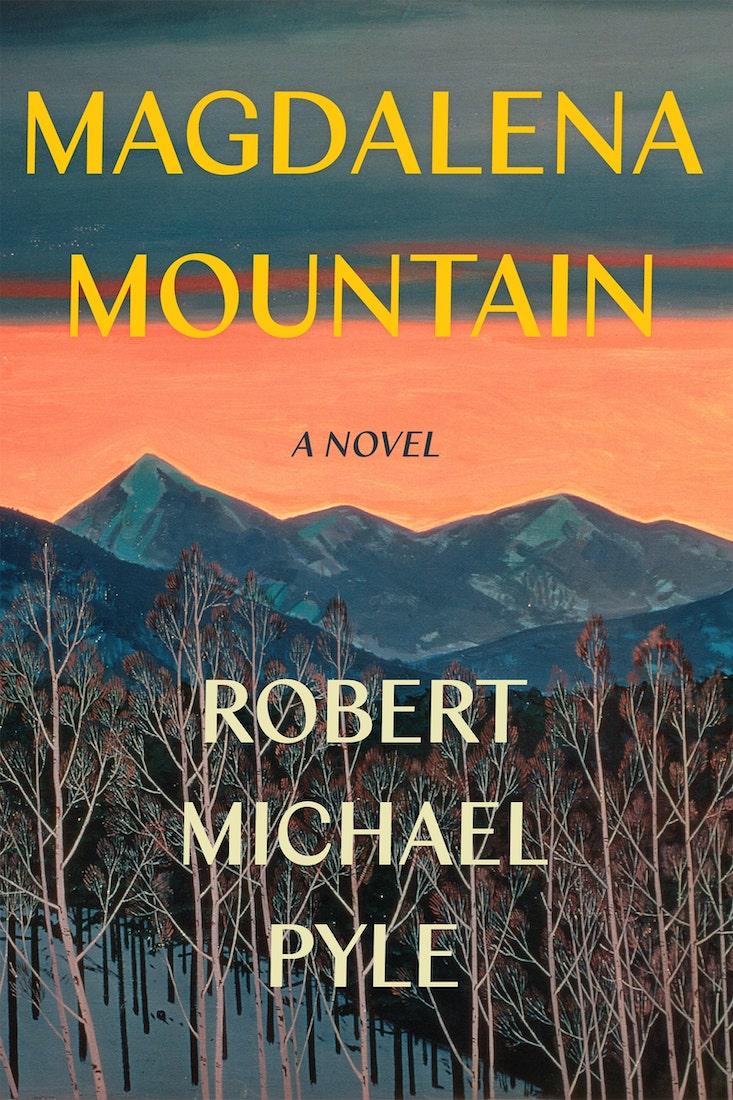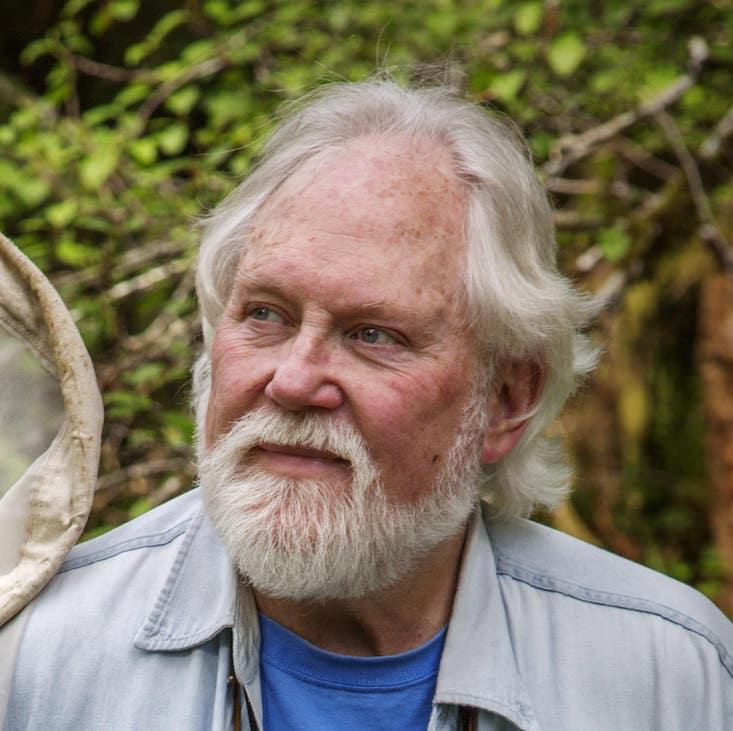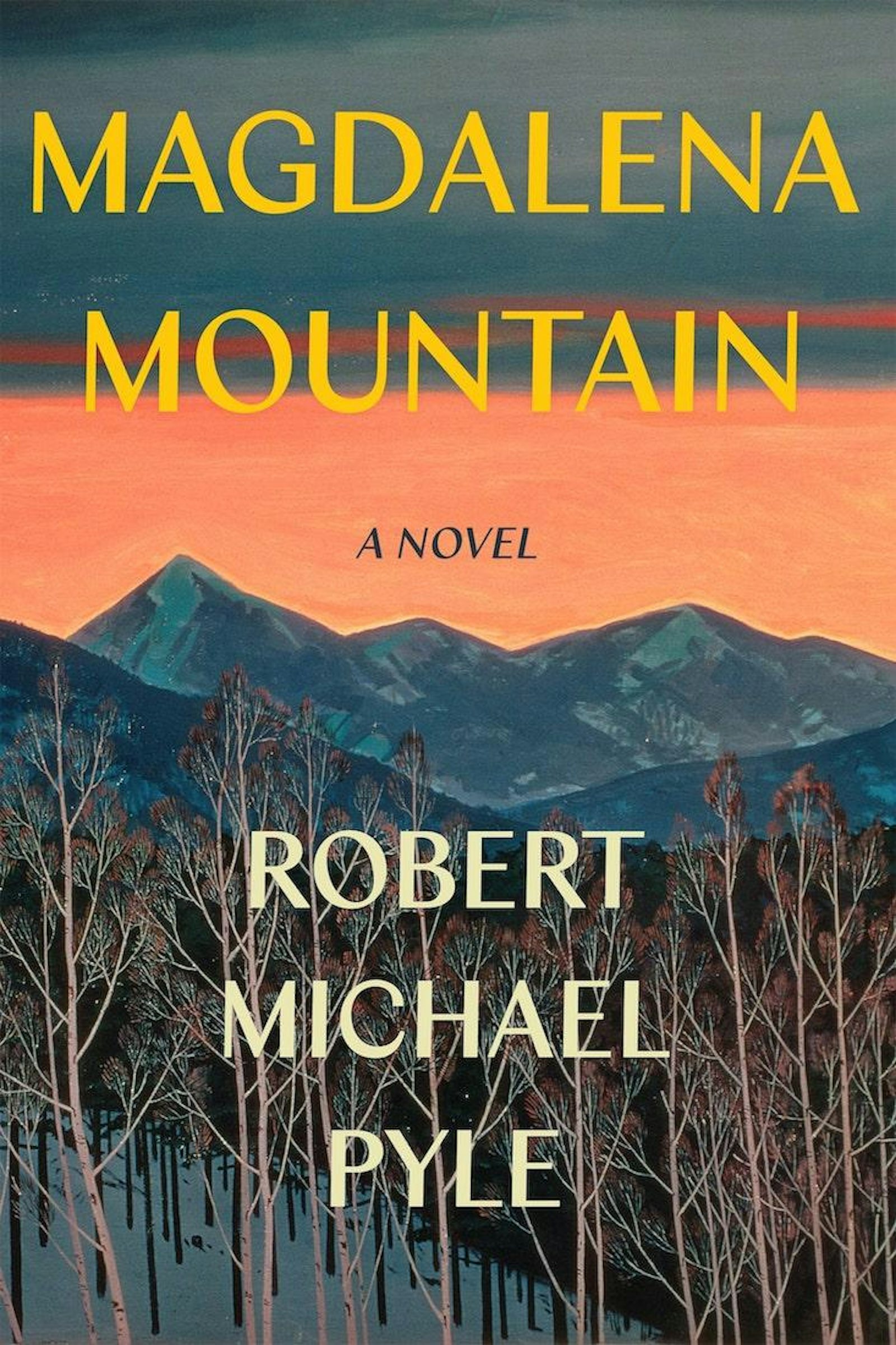
The acclaimed author, naturalist, and ecologist Robert Michael Pyle has been investigating the butterfly for about 60 years. In that time his prolific output has included several butterfly field guides, chronicles of his adventures in the great outdoors (Where Bigfoot Walks, Thunder Tree, and Mariposa Road among them), and the magnum opus Nabokov’s Butterflies, a collection of the novelist’s butterfly writings. Pyle has also made seminal contributions to butterfly research, including his establishment of the Western Monarch’s migration pathway across the U.S. and into Mexico. Forty-seven years ago, he foresaw the acceleration of insect extinctions and founded the Xerces Society, devoted to invertebrate conservation.
This year marked a first for 71-year old Pyle, with the publication of his long-awaited first novel, Magdalena Mountain, nearly half a century in the making. For those of us devoted to his nonfiction, Pyle’s imaginative treatment of the nonhuman world—he includes a butterfly and a mountain among his cast of characters—is both a surprise and perhaps a natural result of his artistic development. Like Nabokov, Pyle has consistently straddled the worlds of science and the imagination.
Pyle caught up with Nautilus recently to chat about his work and the way butterflies shaped his early life.

Is Magdalena Mountain your first foray into fiction?
Fiction isn’t entirely new to me—I’ve published some short stories and poetry. I worked on this novel for 44 years. It went through ten drafts. I started it at Yale, while working on my dissertation, which was about the distribution of Washington State butterflies with respect to conserved land. It was a “gap analysis” before that term came into being. It was deeply enjoyable but very intense intellectually, and left-brain. I was inclined to write something creative at the same time.
What inspired you to make a butterfly and a mountain into fictional characters?
The idea came from a book called Wings in the Meadow, published by Jo Brewer in 1967. Brewer was a wonderful teacher, and her young adult novel was about a single Monarch butterfly and his migration—she called him Daneaus. I thought, I’ll write about a butterfly too, but about the Erebia Magdalena, which I had fallen in love with.
Tell us about your love affair with butterflies.
I started to notice butterflies in the spring I turned 11. That year, my father re-married and I acquired a step-mother and a step-brother and didn’t get along with either. But my step-mother’s family had a cabin in Crested Butte, Colorado. It was not remotely fancy then (it is a ski resort now). It was a crusty old coal town with cheap, crappy cabins. It happened to be a butterfly Valhalla. My father and I would escape the family’s endless smoky bridge games by going fishing. Luckily he never really taught me to tie flies or I might’ve gotten into it. As soon as I discreetly could, I would put my pole down and pick up my butterfly net. I would go up into these meadows full of skippers and fritillaries. I developed a passion for the satyrs, the wood nymphs. I liked their soft, striated browns and their eye spots. The Erebia Magdalena was the ultimate, the greatest among them. Something about it being black really captured me.
And what drew you to center a mountain in your story?
Thomas Hardy’s The Return of the Native was an inspiration. The first six pages of the book take place before a human steps on the page. Landscape is character. It is the place where things happen. One day in 1959, I looked down over a ridge and I saw about 100 people with butterfly nets. Huh? I uttered a childish version of “what the fuck?” I’d never seen anyone else with nets. I had been reading about butterflies and recognized Charles Remington and Paul Ehrlich. The living gods of lepidoptera! They were in their 30s, just kids—out with grad students near the Rocky Mountain Biological Lab. I was pathologically shy but somehow emboldened. I asked these guys if they knew where I could find the Magdalena—they told me there was a big rockslide in back of Ehrlich’s cabin where I would find them. And they were very generous with me, let me go butterfly hunting with them, sometimes even driving to pick me up. (Editor’s note: Remington convinced Pyle to apply to Yale, where he became Pyle’s mentor. Ehrlich went on to write The Population Bomb, with his wife Anne. Remington and Ehrlich both appear in Magdalena Mountain.)
“Does there not exist a high ridge where the mountainside of ‘scientific knowledge’ joins the opposite slope of ‘artistic imagination’?”
The novel contains several storylines. There’s the journey of a woman who loses her memory and believes she is Mary Magdalene incarnate. A budding scientist struggles with a difficult past and graduate school. And a group of men seeking a return to pantheism convene a community called the Grove in the mountains. Did these narratives develop at different times, in different drafts, over the 44 years you were writing the novel?
Yes, I did. I wanted to do this experiment. The butterfly was always at the center of the story and would drive the story, but also one of a cast. While the book is not a roman à clef, a butterfly makes things happen in the book, as it has made things happen in my life. The Magdalenian part is pseudo-religious, developed around the name of the actual black butterfly, but the story is grounded in reality. Researching Mary Magdalene—the most-written about woman in the Bible—was fascinating for me. How the mystery around the name “Magdalena” resolves is all true, as is the entomological research story. I had a lot of fun with it all.
Vladimir Nabokov famously hunted butterflies in Colorado, references to which are woven throughout the book.
For nine years I worked on compiling and annotating Nabokov’s butterfly writings, with his biographer Brian Boyd, and his son, Dmitri Nabokov. During the process I discovered Nabokov’s wonderful question, “Does there not exist a high ridge where the mountainside of ‘scientific knowledge’ joins the opposite slope of ‘artistic imagination’?” It inspired the title of my book Walking the High Ridge: Life as Field Trip. But there was more. In Look at the Harlequins, Nabokov has Vadim and Bel stay at Lupine Lodge, which was surely modeled on Columbine Lodge where Nabokov stayed in 1947. Bel scribbles a poem: “Longs’ Peacock Lake: / the Hut and its Old Marmot; / Boulderfield and its Black Butterfly; / And the intelligent trail.” The black butterfly! My Erebia! And of course it was near Telluride that Humbert realized the moral consequences of his crimes in Lolita.
How do you use Nabokov’s idea of a “high ridge” between art and science as an educator?
When I teach environmental writing I use Nabokov’s quote to build a model. I start by trying to establish the difference between the mirror-like reflection of reality sought by science and journalism and the refractive aim of those writing essays, fiction and poetry. C.P. Snow’s Two Cultures metaphorically fall on either side of a mountain, with subjective, lyrical imagination on one side, and objective analysis on the other. This becomes a model of the bicameral mind. I’m not a brain scientist, but the region of the brain lying between the hemispheres is the corpus callosum and it integrates the two. Now we’re stepping into metaphor. Essayists are the true ice skaters who need to get across. But why should any of us operate with only one set of tools? That’s like having one hand tied behind your back.
It would seem that fiction allows a writer to use time differently. Nonfiction is mostly constrained by the linear necessity of then and now, perhaps looking into the future. In the novel, an ancient figure like Mary Magdalene can seamlessly play a present role.
Yes, that’s right. And the long time-frame of a mountain’s life, as well as the cyclical life over time of butterfly ecology, can be integrated into the present time experienced by human characters. Fiction allowed me to intermingle the life of Erebia and its kind with the human cast, thus further smearing the invidious line between humans and the rest of nature. People are as much a vehicle for moving the butterfly plot as the reverse. I like their inextricability in this story. Fiction allows for a certain kind of wholeness.
Mary Ellen Hannibal is most recently the author of Citizen Scientist: Searching for Heroes and Hope in an Age of Extinction, and a Stanford media fellow.






























